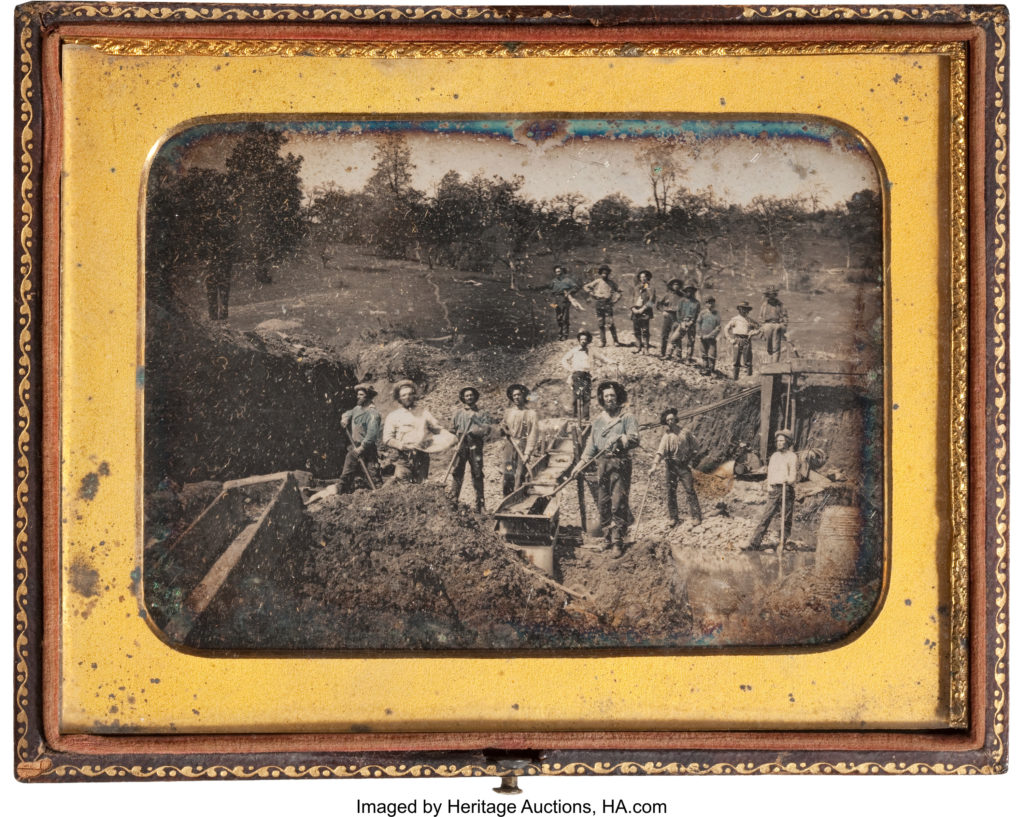
By Jim O’Neal
When Brigham Young heard that fellow Mormon Sam Brannan had been tithing the gold miners at the Mormon Diggings in California, he sent an envoy to demand the church’s money. In a version of the story circulated by sawmill operator John Sutter, Brannan replied, “You go back and tell Brigham Young that I’ll give up the Lord’s money when he sends me a receipt signed by the Lord!”
Brannan’s success transcended his dealings with local miners. As the rush to the mines accelerated, his Sacramento store did huge business, as much as $5,000 a day. With the proceeds, the wily entrepreneur opened additional stores throughout gold territory and constructed hotels, warehouses and other commercial buildings. In San Francisco, he organized a consortium that built the city’s first large wharf at a cost of $200,000. By quickly repaying all owner-investors, Brannan’s reputation and wealth continued to grow.
Sam Brannan is widely recognized as the first authentic millionaire in California.
When gold was discovered on the American River above Sutter’s Fort in January 1848, California was a sparsely populated frontier. The gold had been formed over a 200-million-year period with the constant recycling of the earth’s crust as minerals precipitated out in streaks or veins. Gold occurs in the crust of the earth at an average concentration of 5 parts per billion. But, the melting and cooling that produced the Sierra Batholith yielded veins of gold-bearing quartz as high as 100 parts per billion.
Most of this gold was trapped far below the surface of the earth, where it remained for tens of millions of years until the crust crumbled and the glaciers took over. The heat of the earth – which had driven the crystal plates to their collisions with the western edge of North America – then melted the rock and boiled out the precious metal. All that remained was for humans to harvest what the earth had collected. And they did so with enormous zeal.
The astonishing news of “Gold! In California!” prompted hundreds of thousands of people from around the world to flock to California in hopes of finding instant riches. They sailed from Australia and China, from Europe and South America. They ventured across the disease-plagued Isthmus of Panama and through the treacherous waters of Cape Horn. And they traveled by foot, wagon and horseback and over the towering Sierras. They abandoned wives and families, homesteads and farms.
Sacramento and San Francisco popped up overnight as did scores of mining camps. Entrepreneurs such as Leland Stanford, Sam Brannan and merchants like Levi Strauss amassed fortunes simply by supplying miners with picks and shovel, tents, food and other items needed to harvest the gold. By 1850, California had become a state … marking the fastest journey to statehood in United States history.
Sam Brannan hit a bad streak when a divorce forced him to liquidate his entire holdings to pay a court-ordered 50/50 division of assets … in cash. He died penniless and establishing a precedent that would plague future husbands who were divorced in California.
 Intelligent Collector blogger JIM O’NEAL is an avid collector and history buff. He is president and CEO of Frito-Lay International [retired] and earlier served as chair and CEO of PepsiCo Restaurants International [KFC Pizza Hut and Taco Bell].
Intelligent Collector blogger JIM O’NEAL is an avid collector and history buff. He is president and CEO of Frito-Lay International [retired] and earlier served as chair and CEO of PepsiCo Restaurants International [KFC Pizza Hut and Taco Bell].

